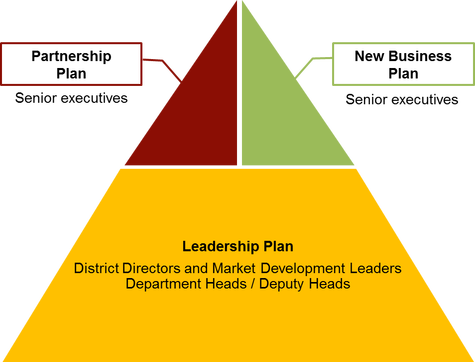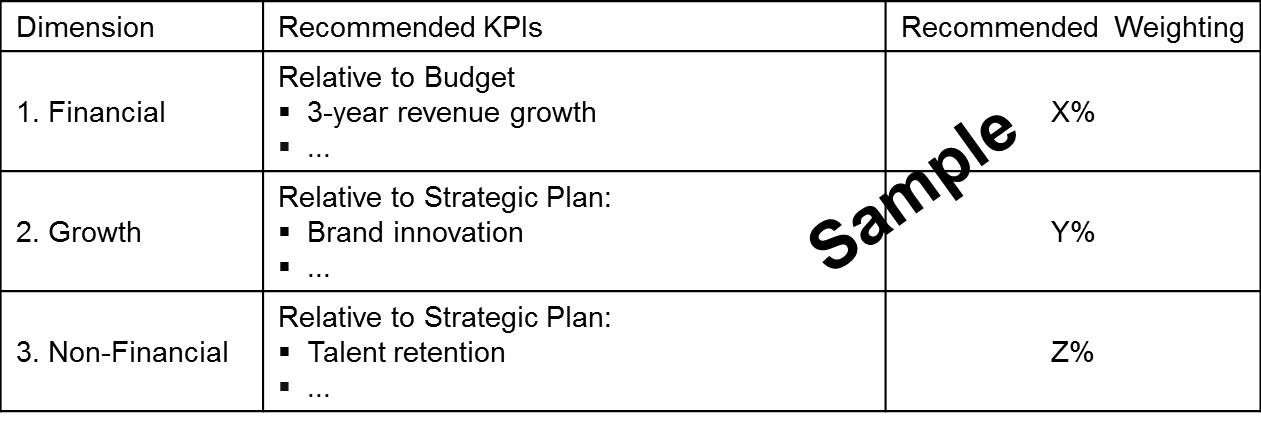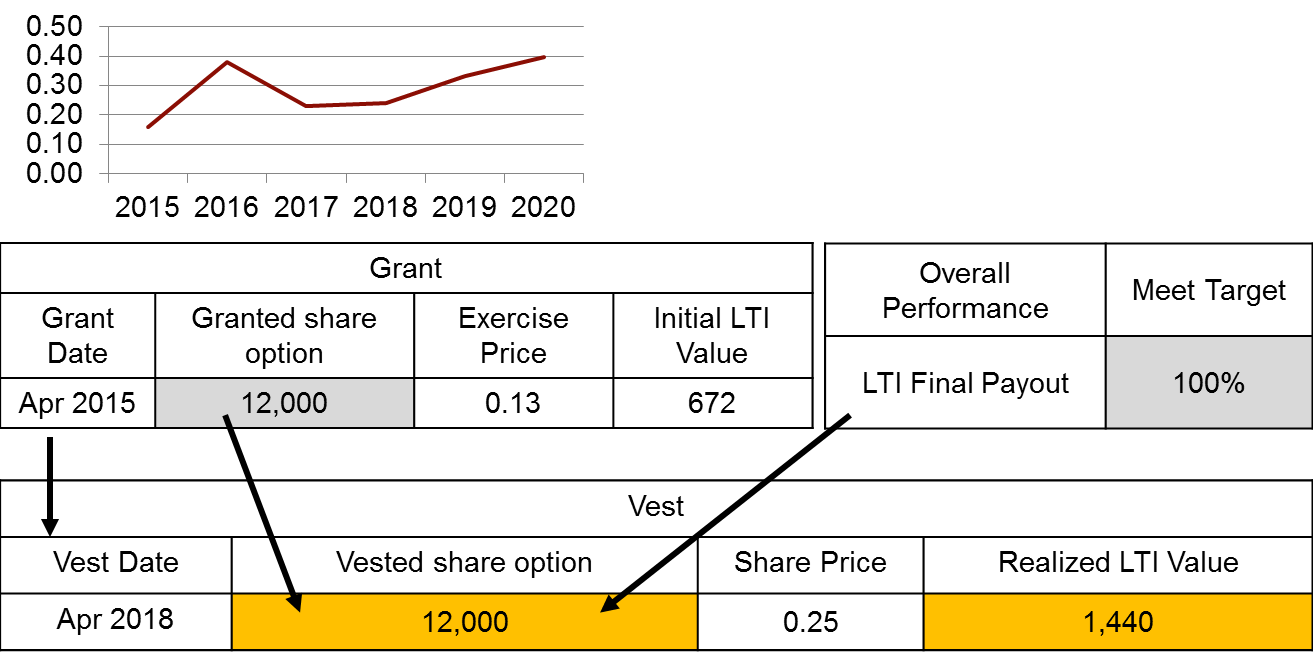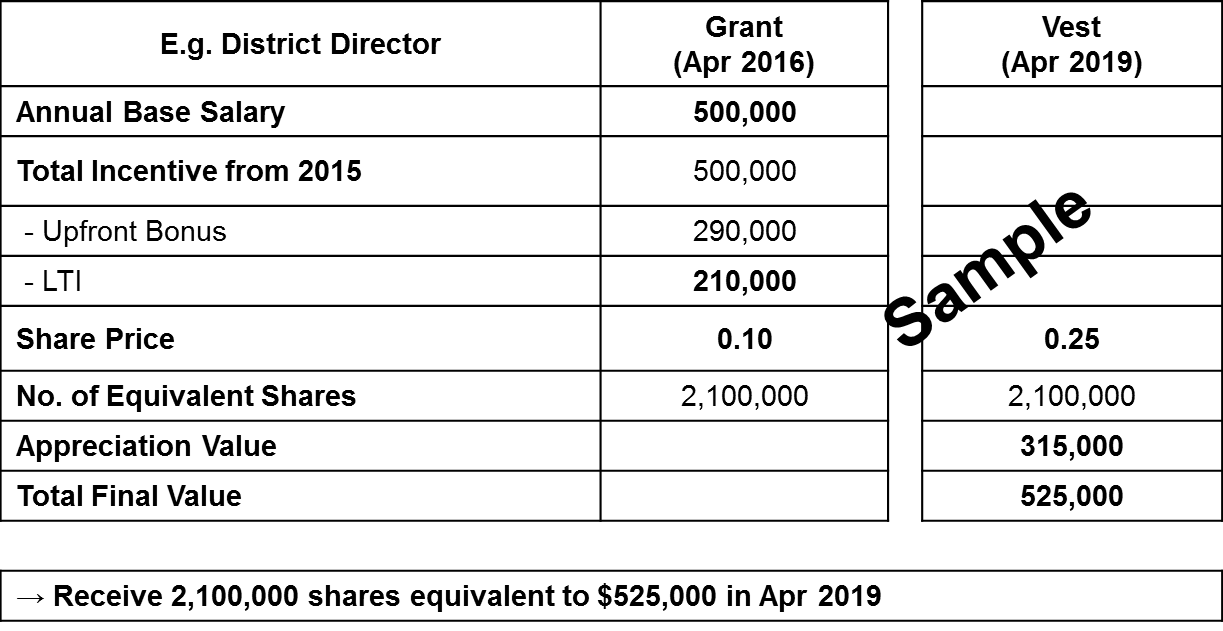Case Study: Promote Partnership with Long-term IncentivesBackground
Illustration: Proposed Overall LTI Framework
Illustration: KPIs and Payout Range
Illustration: Effect on Performance Contingent Stock Options - When KPI Meets Target
Illustration: Profit Sharing
Illustration: Deferral Arrangement
|
Relevant Links:
|

|
|
- Home
-
What's New ?
- Bonus Pick Up Partially Offset Slower Pay Increase in 2024
- 1 x 1 = >10? Combine Talent Pass with Long-term Incentives to Maximize Talent Pool
- Dual Impact of Bonus Plunge and Great Resignation Drive Staff Turnover to 5-Year High
- Pay will be Above Pre-COVID levels; Financial Industry is Ahead in Benefiting from Recovery
- Incentive Pay Makes Top US CEOs and CFOs Best Paid in World, According to First-Ever Global 250 Survey
- How to Retain Key Talent after Bonus Season?
- Differentiating Bonus with Performance
- Is a Formula Better than Discretion in Paying Incentives?
- Rippling Effect – More Industries Embrace Partnership
- Globalization – It’s Easier Said Than Done
- Strengthen Performance Planning to Drive Performance Management
- Benefits as Essential Tool for Improving Employee Engagement
- Shifting Away From “Low Pay, High Bonus” for Sustainability
- Strengthen Pay & Performance Alignment For Top Executives
- Budgeting & Manpower Planning: Top-down or Bottom-up?
- Maximizing Employee Benefits
-
Challenges & Solutions
-
Research & Events
- Pretium Pay & Performance Survey
- Pretium Compensation Level Survey
- Pretium Incentive Practices Survey
- Pretium Staff Ratios and Manpower Budgeting Survey
- Pretium Benefits & Employment Conditions Survey
- Pretium Year-end Rewards & HR Trends Survey >
- Independent Non Executive Director Fee Study
- Long-Term Incentive Survey Report – General Industries
- Global Top 250 Compensation Survey Report
- Retail Brokerage Survey
-
Case Studies
- Develop Performance Aligned Salary Structure
- Review Pay Positioning to Steer Growth
- Incentivize and Retain Senior Executives to Drive Performance
- Promote Partnership with Long-term Incentives
- Pre-IPO Long-Term Incentive Design for a Diversified Company
- Strengthening Short-Term Incentive Strategy
- Carried Interest and Performance Management
- Strategic Compensation and Benefits Advisory Services
- One-stop Human Resources Solutions
- Grading and Job Title System
- Career
- 中文






